The Vodou temple in north Montreal is grey and crumbling. Yellowed newspapers patch the glass door. Red sheets cover four storefront windows. An empty shell gapes where there once was a sign.
I’m about to enter this building and experience my first Vodou ceremony, when a memory flashes: “That’s not a good part of the city. You don’t want to go there,” warned the Creole interpreter I’d contacted a few weeks earlier. “You don’t want to get mixed up in Vodou. I’m sorry. I feel I must tell you this. There are books about Vodou. Just read about it, but you don’t need to go.”
Stepping inside the ounfo (temple), I’m overwhelmed by the colours and textures lobbying for attention. Hangings. Posters. Artificial flower arrangements. Candles. Bottles of alcohol. Wooden eggs. Silk. Velvet. Beads. Sequins. Figurines of lwas (spirits) standing shoulder to shoulder. Water washing over a tiered garden fountain.
La Belle Deesse, the manbo (priestess), shakes my hand. Her yellow-checkered dress and freckles give her a youthful appearance. “Consider this your home,” she says graciously. “It is as much your home as it is ours.”
Deesse has invited me to a Vodou ceremony, a “spiritual party” in honour of Ogou Senjak and Ogou Feray, warrior spirits. It’s an all-nighter; the Vodouists (or in French, Vodouisants) will be partying from 8 p.m. to 4 a.m., give or take an hour or two.
From the outside, no one would suspect that this dilapidated building is a thriving. The location is as clandestine as the religion. Vodou leaders coaxing the maligned religion out of the closet brave startling discrimination; delivering Vodou from doll-pricking, zombie-raising, curse-casting stereotypes means overturning centuries of misrepresentation by colonial interests.
Historically, the Christian response to Vodou has been to ignore it, condemn it or convert its followers. As a white Protestant minister, I’ve decided to try what our Christian track record would suggest is a radical approach to Vodou — to simply experience it. To encounter it without judgment. Here’s what I discover: a religion nearly four times as old as my own denomination, still seeking acceptance. For Vodouists living in Haiti, freedom of religion hangs in the balance.
“Nobody gonna talk to you about Vodou. Nobody gonna admit it,” the stranger says matter-of-factly. I’m pacing the sidewalk of a tiny strip mall in Ottawa’s Haitian community, trying to find someone who will tell me about Vodou. Finally, a salesperson in an electronics store gives me a number. “Call her. I don’t know if she’ll say anything, though.”
She’s Fabienne Lozis, a lawyer and the president of the Union des haïtiens de l’Outaouais. We talk in her Ottawa office under the attentive stare of assassinated Haitian revolutionary Jean-Jacques Dessalines, whose portrait hangs above her desk.
“Vodouisants are persecuted. Persecution is in our history. It’s always been a fight for survival. I’ll tell you, the majority of Haitians practise Vodou. They practise it in their own homes, but they won’t tell you about it because they are afraid,” she says in a thick French accent.
Lozis describes herself as a non-practising Vodouist. She’s studying the religion with spiritual leaders to learn more about African culture. “Some people would get very mad at this idea, but I would say that all Africans are Vodouisant because that is our roots,” she says.
For 45 minutes straight, Lozis recounts Haitian history. “Discovered” in 1492 by the Spanish, ceded to France in 1697. By 1750, nearly half a million enslaved Africans lived in Saint-Domingue (Haiti’s name as a French colony). Catholicism was the official religion, and Vodou was outlawed. But Haitian independence is to Vodou what beans are to rice in Creole cuisine. In the late 18th century, while the colony churned out tens of thousands of tonnes of sugar annually, Vodou priests drummed up rebellions, finally gaining independence in 1804.
Haitian Vodou history reads like a laundry list of religious co-option. The United States occupation from 1915 to 1934 gave rise to Hollywood caricatures. During the Catholic campaigns against “superstition” in the 1940s, Vodou objects and temples were destroyed, leaders were forced to convert or go to prison, and Protestant missionaries swept in. Then came Vodou’s perversion by François “Papa Doc” Duvalier, who took power in the late 1950s, assumed the persona of Baron Samedi (a malevolent Vodou deity) and recruited Vodou priests and secret societies to support his bloody campaign. When Duvalier’s son Jean-Claude “Baby Doc” was deposed in 1986, thousands of Vodou followers were killed in retaliation for their connection to him.
Lozis wends her way to the 2010 earthquake, which killed an estimated 220,000 people and affected millions more. “After the earthquake, do you know what happened? Vodou was blamed for causing it! All these Christians started coming to Haiti with the idea of helping, and put a lot of trash into people’s minds about Vodou.
And people believed them. People who practised Vodou were killed. And now people spend a lot of time praying to get rid of Satan instead of putting together their strength and making the situation better,” she scoffs.
Lozis believes that the influx of missionaries after the earthquake pressed Vodou further underground. Just a month after the disaster, the Baptist Press reported that 40,127 Haitians made professions of faith in Jesus Christ and that the Florida Baptist Convention spent $53,000 to purchase Bibles and tracts for Haiti-wide crusades.
Today, evangelical groups own three of the 10 most popular radio stations in Port-au-Prince, Haiti’s largest city. Radio is a key source of communication in a country whose literacy rate hovers around 50 percent. Christian organizations also control humanitarian aid and access to medicine, while international private schools and church-run schools educate 90 percent of Haiti’s students.
But wearing a cross doesn’t necessarily mean trading in the sacred rattle. Vodou is a syncretic religion, originally a blend of African traditions. Its porous nature makes it well suited to adaptation. During slavery, Vodou lwas were disguised as Catholic saints: Legba (the first lwa invoked in a Vodou ceremony because he is the gateway to other lwas) was recast as St. Peter (the keeper of keys at the Pearly Gate); Loko (the guardian of the worship space) was modelled into St. Joseph (the protector of Jesus). There’s a maxim: Haiti is 80 percent Catholic, 20 percent Protestant and 100 percent Vodou.
The celebration will be held in the basement, in the peristyle, or worship space. Posters of Ogou Senjak and Ogou Feray are pinned along the walls. Grass-covered chairs are stationed in a circle around the potomitan, a sacred pole through which the lwas are said to descend. A table along the far wall brims with cakes, candles, bottles of alcohol and figures of the warrior lwas.
Men rush in carrying large drums. Women wearing ceremonial white dresses and red headscarves mill about. About 100 people fill the room, sitting in rows of chairs along the perimeter.
Chanting cuts the fray. A lone female voice leads; for eight hours, the Vodouists sing by heart. Some gesticulate and say the Lord’s Prayer. Chairs are put aside for dancing. Gentle swaying gives way to stooping and stomping.
Drummers pick up the pace. Worshippers greet each other, holding hands and dipping at the knees. Leaders shake the ason ak klòch (sacred rattle and bell). They bow before the drummers, spinning and stepping in concert. By midnight, there are no chairs left. Ten-minute breaks punctuate the passing hours; rum flows as liberally as the chatter.
I wander back up to the main floor and into one of the altar rooms. The light switch doesn’t work. Squinting, I see a massive portrait of a skeleton in a top hat, smoking. He dances on an altar draped in purple satin, a pillow with a skull and crossbones at its base. The symbols strike me as comically macabre; I don’t know whether to laugh or beeline out. Later, at the Vodou exhibit at the Museum of Civilization in Gatineau, Que., I’ll learn that the symbols represent a comforting connection with the ancestors and a pragmatic nod to human mortality.
“What’s Vodou?” asks my 10-year-old son as we stand in line for the exhibit. I mutter something about African origins and sticking dolls with pins. How did I arrive at such a pitiful answer? I make an embarrassing list: episodes of Scooby-Doo and Gilligan’s Island; the movie White Zombie. I have a degree in religious studies — Vodou never came up. “Vodou is sex-in-the-attic stuff,” says a colleague. Others are equally repulsed. How did Vodou become such a dirty secret?
Adam McGee, a doctoral candidate at Harvard University, calls Vodou a scapegoat for racial and cultural anxieties. “Principally an invention of Hollywood — and of travel writers long before that — voodoo has power in the imaginations of many, in spite of the fact that it has little or no basis in fact. This imagined religion serves as a venue for the expression of more-or-less undiluted racial anxieties, manifested as lurid fantasies about black peoples,” he writes in an article entitled “Haitian Vodou and Voodoo: Imagined Religion and Popular Culture.”
Fear of Vodou has long stoked racist depictions of its followers. Consider this description of a Vodou ceremony, published in 1896 in the U.S. newspaper Picayune: “Impassioned black savages danced as naked as islanders to the beating of ox skulls and tom-toms.” Do characterizations like this continue to have an unconscious hold on westerners — on me?
Bob St-Felix, an oungan (priest) who divides his time between Montreal and Ottawa, laughs out loud when I ask him if he sticks pins in dolls, casts spells or turns corpses into zombies. I’m sitting in St-Felix’s basement with his partner, Myrtha Etienne (a manbo), and protege Cecile Remy discussing the four archetypes that inform the popular imagination of Vodou: the voodoo doll, the zombie, the witch doctor and voodoo possession.
“There is no sorcery in Vodou,” St-Felix says. “There is power over the elements [earth, air, fire, water], and you can use it in good and bad ways — and some people do use it in bad ways — but there will always be people who do bad things.” He turns to the zombie stereotype. “What is a zombie? It is raising from the dead. Certain levels of manbos and oungans can do that. But it’s like resuscitation in hospitals. They know the herbs to use for anesthetics and to help breathing. It’s not like Hollywood,” says St-Felix, sticking out his hands, miming a zombie.
Vodouists worship a single creator, Bondye, a distant God who sends intermediaries — a pantheon of lwas — to act in the world. These spiritual forces correspond to aspects of the universe, vary between families and regions, and communicate with followers by “mounting” (spiritually possessing) them. Oungans and manbos perform religious ceremonies to call, pacify and seek guidance from the lwas. Teaching, healing, educating, holding initiations for new priests and priestesses, and interpreting dreams are other central parts of the role.
St-Felix and Etienne are spiritual leaders in L’Église Vodou, an umbrella organization that includes 10 international Vodou communities. They and their colleagues have begun drafting manuals about the principles of the religion and writing a code of ethics to standardize it. While the community in Montreal has taken off, the Ottawa group meeting in a community centre struggles.
“People want their kids to be baptized and have the sacraments. They practise Vodou in their homes but not in the open because they are afraid that if they are seen, the Catholic Church won’t accept them,” says St-Felix. “We have a lot of work to do to put the structures in place, to offer a temple, baptisms, marriages, morality teachings and other aspects of religion that Vodouisants turn to the Catholic Church for.”
Catholic elements in Vodou are a bone of contention. St-Felix wants to erase them all because “Catholic aspects come from colonialism.” I point to the Madonna-and-child images hanging over his head. Etienne pipes up. “Those are mine from before I met Bob. There used to be a lot more. I was Catholic. We all start out that way. It takes time and a lot of patience to remove that element. I keep telling Bob to be gentle,” she laughs.
Etienne sympathizes with those who are afraid to identify as Vodou. “The minute you say you are Vodou, people stare at you. Last year, I was with religious leaders at Fête du drapeau haïtien [Haitian independence day], and when it was announced that I represented the Vodou community, the priest sitting beside me got up and left.”
Nearing midnight, a worshipper drags her knees across the floor, lurching forward as her dragon-handled cane digs in. Her eyes glaze over, tongue protruding. She shakes the dragon at worshippers then disappears into the crowd. Another worshipper waves her arms, words drowned by the deep drone of the drum. Her knees buckle under, and she is hoisted under the arms and swept to her seat. Across the peristyle, a man falls face first to the floor, writhing. Worshippers cover him with a white sheet, slipping offerings underneath. In front of the altar, worshippers draw veves (sacred images) on the ground with cornflower.
Haitian sociologist Laënnec Hurbon says that some of the misunderstandings with Vodou stem from the “feeling of the uncanny” it provokes in the observer. Indeed. Sitting on the sidelines, I’m feeling the uncanny. But I’ve felt similarly reading Christian mystical accounts of spiritual possession and in charismatic churches where congregants speak in tongues.
At the Museum of Civilization’s Vodou exhibit, a volunteer lays cards on the table, face up. Half display images of Vodou religious rituals, the other half images of rituals practised by mainline religious traditions. The exercise is to match them up. The card depicting Vodou possession is paired with an image of Shamanism; Vodou veves connect with Tibetan sand mandalas. The message: Vodou is a religion, just like all the rest.
Some scholars argue that Vodou needs a linguistic makeover in order to be accepted. They say that the true religion, Vodou, needs to be distinguished from voodoo, the West’s derogatory characterization of the religion. Last October, the U.S. Library of Congress agreed, changing its subject heading from “Voodooism” to the Creole spelling “Vodou.”
However it’s spelled, Vodou is making strides — in 2003, Vodou was finally recognized as an official religion of Haiti. But in practice, acceptance comes up short. Margaret Mitchell Armand, a sixth-generation Vodouist and the author of Healing in the Homeland: Haitian Vodou Tradition, says that Vodou practitioners are constantly harassed.
“I knew an oungan who was murdered. A young woman’s child died, and the authorities said he cast a spell and caused it. When something goes wrong, Vodou gets blamed.”
But people don’t have to be killed in order for religious freedom to be compromised, she adds. “I have a tree outside the back of my home in Haiti, and when I pray there, Christians come up with megaphones shouting, ‘Your God is a devil.’ Sometimes Christians are shouting at us so loud that we can’t conduct ceremonies in our peristyles.”
Armand is concerned that constitutional amendments that came into effect in Haiti in June 2012 eliminate constitutional protections for Vodou. In brief, a 1935 anti-superstition law was repealed in 1987. But the repeal itself was dropped from the books last year, leaving Vodouists fearful that they’ll face discrimination cloaked as “anti-superstition” once again. “Vodouists are no longer protected under the law,” Armand asserts.
According to the 2012 International Religious Freedom Report issued by the U.S. Department of State, concerns that freedom of religion is compromised under the amended constitution are unfounded.
Acknowledging that members of the Vodou and Muslim communities in Haiti “complained they did not enjoy the same legal protections as Christians,” the report goes on to state that “government officials, including the prime minister, immediately responded to these concerns and stressed that the new amendment would not limit the freedom of religious expression.” The same report claims there were “no reports of abuses of religious freedom” in 2012.
Oungan Zaza (Frantz Jean Raymond) says that he was arrested on Aug. 18, 2012, while preparing to conduct a Vodou ceremony near Cap-Haïtien. Over the phone in Haiti, Zaza sounds measured, methodically recounting the details of his experience. He says that a group of plainclothes police officers arrested him and held him in a Cap-Haïtien prison for 11 months without trial.
He has been ill since his release, having developed “sugar problems” while incarcerated. “I had to stand most of the time. There was no room. It was so hot. It was not fit for humans. I can’t even describe it,” Zaza says, his voice trailing off. “When they released me nearly a year later, they just said that they couldn’t find any evidence of wrongdoing. . . . I think they were sending a message about Vodou.”
La Belle Deesse leads me into an altar room. Against the far wall stands Lwa Erzulie Dantor, a crowned black Madonna. The child propped in her arms stares disarmingly. Erzulie’s tale is as old as Haiti. Legends say she possessed Boukman Dutty, the Vodou priest who is said to have ushered in the Haitian Revolution, ultimately delivering Haiti from centuries of enslavement.
She is the mother of a nation, carrying her child to independence, self-determination and justice. Songs are sung about her. One goes, “The day I am run down, I will vomit my blood and give it to them.” Erzulie is so tough that despite being stabbed seven times, she refuses to relinquish the basin into which she spits blood.
I can’t take my eyes off her. She is the iconic personification of independence, a perfect window into Haitian spirit and history; persecution, perseverance and religious conviction singularly cast. As I leave at 2 a.m., La Belle Deesse’s comment resonates: “She is freedom. She is the most important one.”
Rev. Trisha Elliott is a minister at Carleton Memorial United in Ottawa.
***
This story first appeared in The United Church Observer’s October 2013 issue with the title “A faith maligned.”

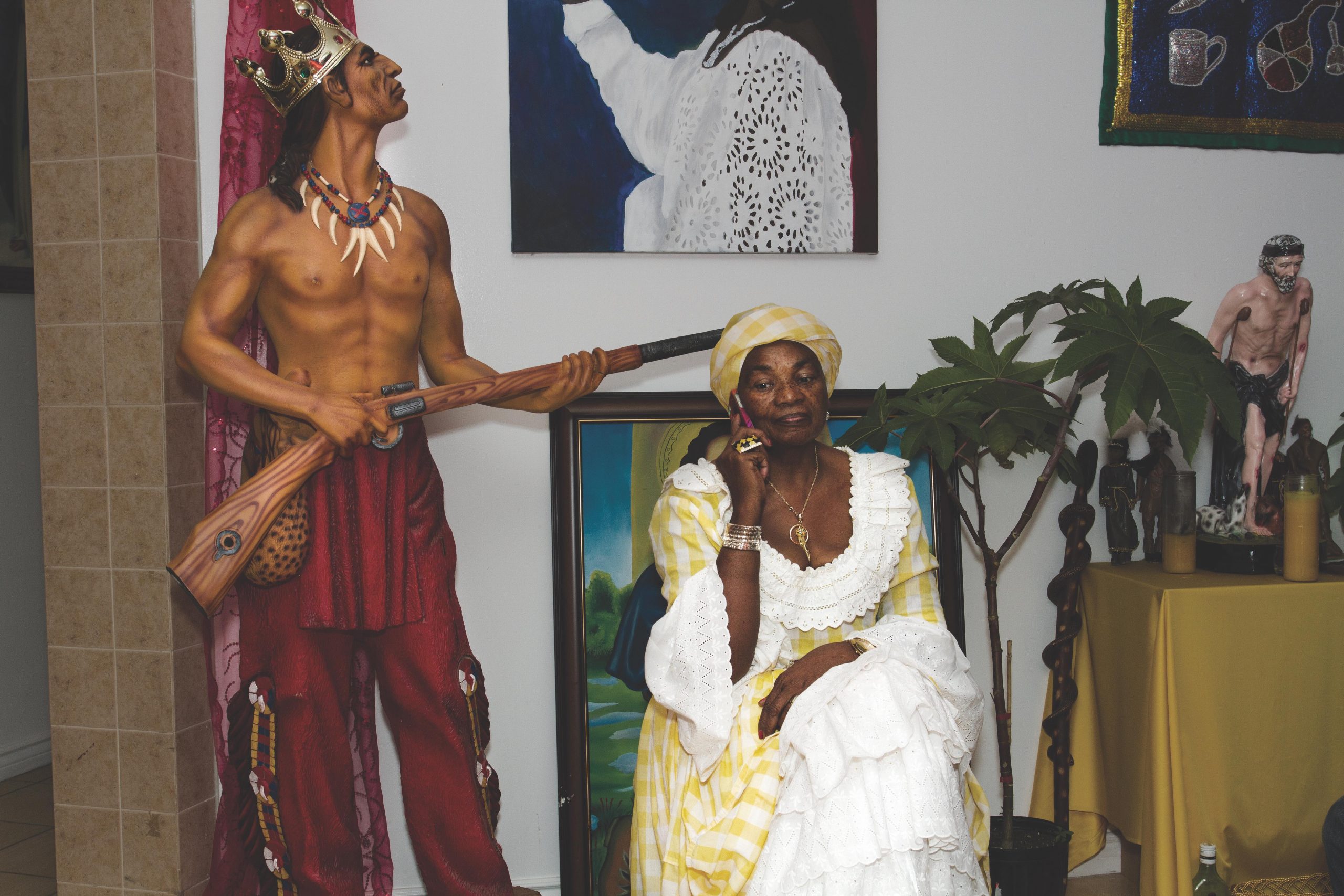








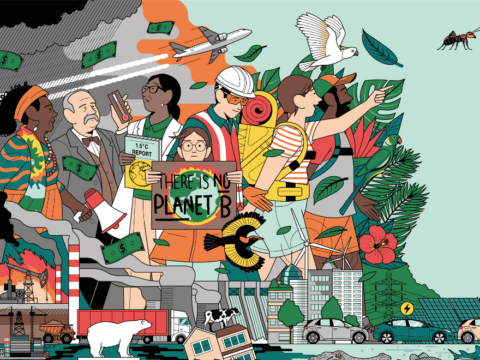
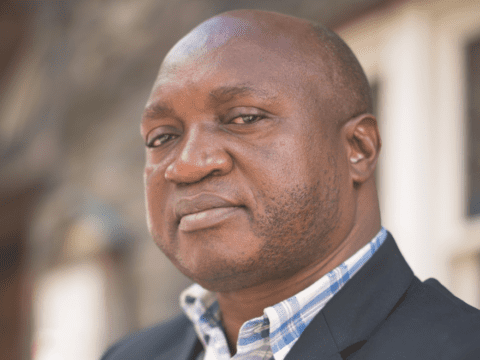
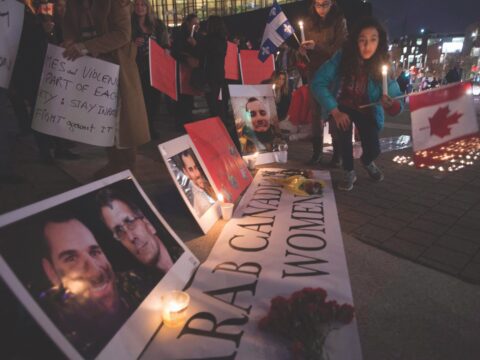
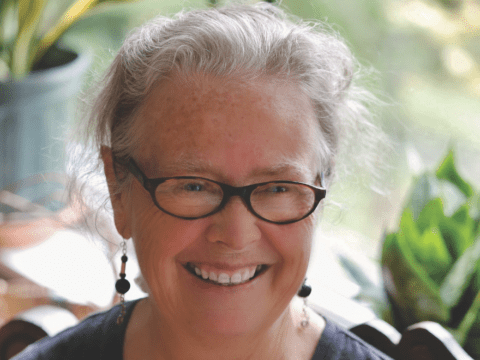


Interesting article but is Baron Samedi really considered “malevolent”?